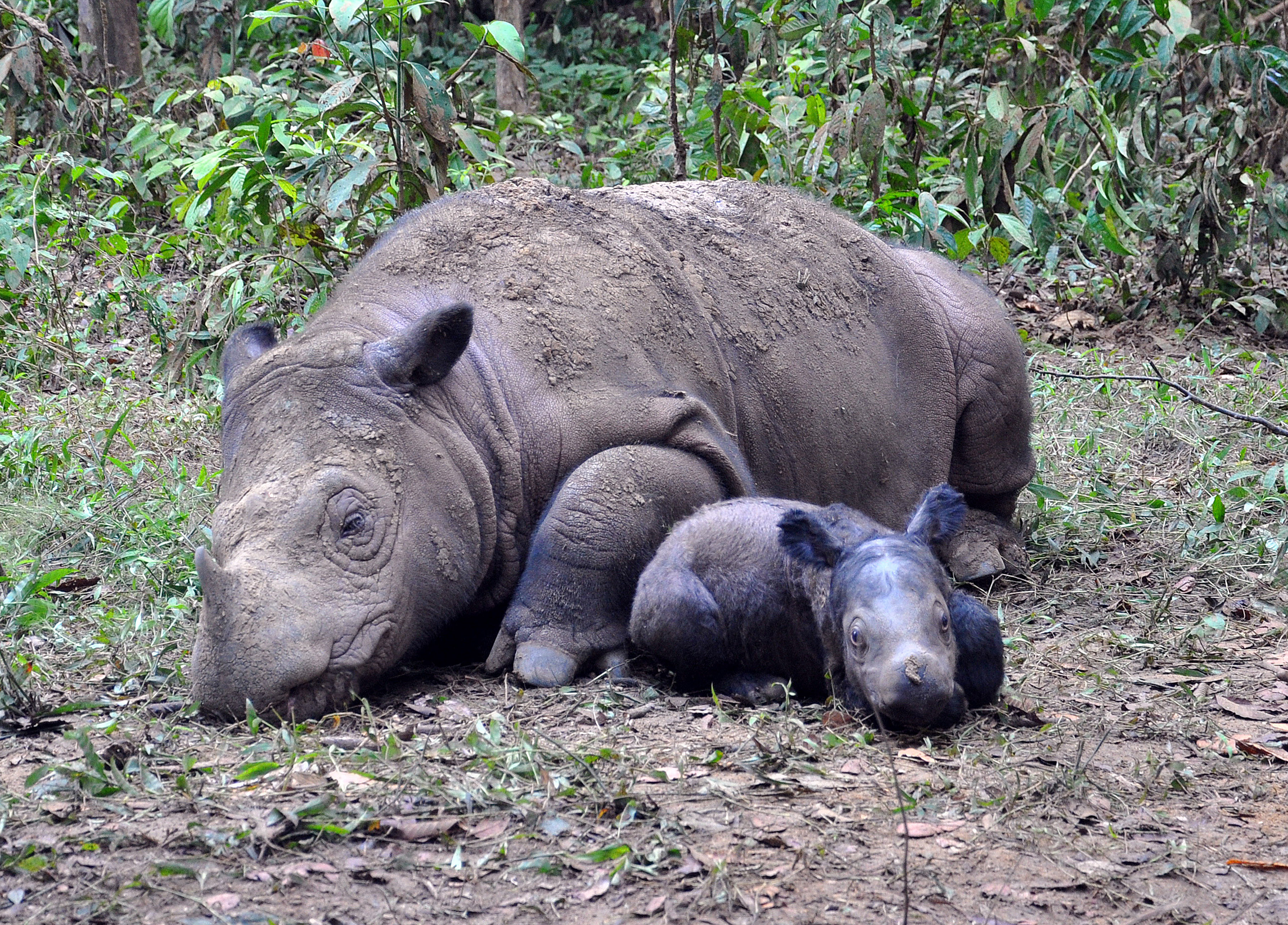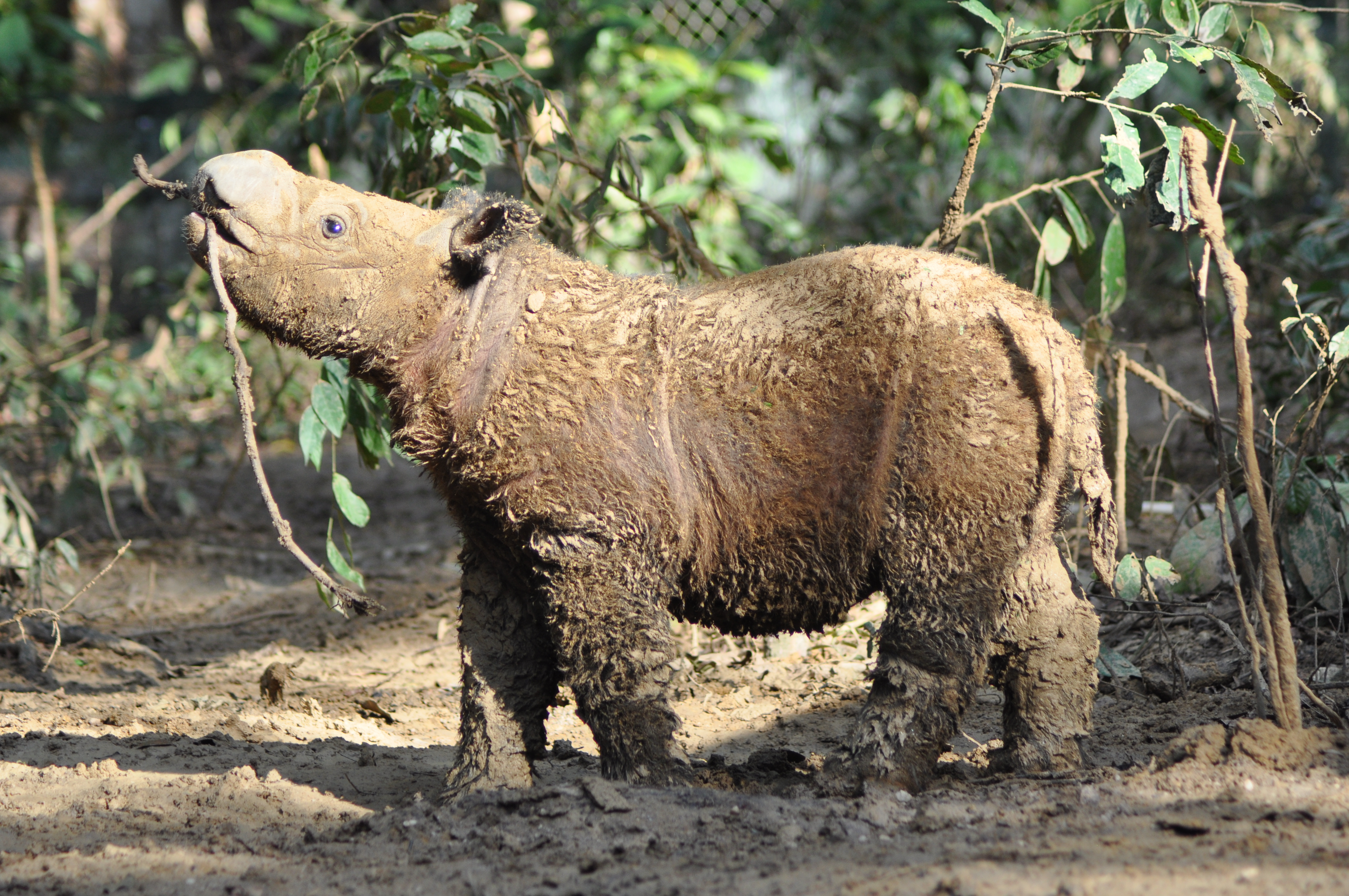Saving the Sumatran Rhino – While We Still Can
This is our last chance to save Sumatran rhinos.
In dense, steamy rainforests on the Indonesian islands of Sumatra and Borneo, Earth’s few remaining Sumatran rhinos are struggling to exist. Barely hanging on in fragmented sub-populations, this rhino is so rare – fewer than 80 survive – that only a handful of people have ever seen one in the wild. The decline of the species was initially caused by habitat loss and poaching for their horns, threats that still persist today.
Despite ongoing protection, the species faces extinction. Sumatran rhinos have become isolated in tiny pockets, decreasing the probability of breeding-age animals encountering one another. There simply aren’t enough rhino babies being born.
THE ALLIANCE
Indonesian government officials and rhino experts agree that the only way to bring the Sumatran rhino back from the brink is to consolidate the fragmented wild populations into managed breeding facilities designed specifically for their care and propagation. Without this intervention, these rhinos will go extinct in a matter of decades.
Recently we teamed up with the Government of Indonesia, National Geographic, World Wildlife Fund, IUCN and Global Wildlife Conservation to form a groundbreaking strategic partnership to save the Sumatran rhino from extinction. The effort was established to support the Indonesian government’s national Sumatran rhino breeding program.

OUR PLAN
In anticipation of captures of rhinos from small, isolated populations, IRF is expanding our captive breeding facilities and program at the Sumatran Rhino Sanctuary, which now holds seven animals. Our goal is to quickly and safely increase rhino numbers, creating a source population from which animals can someday be reintroduced into the wild.
We have more than 22 years of experience maintaining and breeding Sumatran rhinos in captive settings. Using techniques first perfected at the Cincinnati Zoo & Botanical Gardens, and later at the Sumatran Rhino Sanctuary in Way Kambas National Park, we are confident that this project can help to turn around the dire situation facing Sumatran rhinos,” says Susie Ellis, executive director of the International Rhino Foundation.
Thanks to decades of hard work, international research and collaboration, and your support, the sanctuary has produced the only two Sumatran rhino calves born in captivity in Indonesia.

We know this is an ambitious and risky mission, and there are no guarantees. Yet, doing nothing is not an option. It is time to act – and you can help us save Sumatran rhinos from extinction.


2 thoughts on “Saving the Sumatran Rhino – While We Still Can”
Reblogged this on "OUR WORLD".